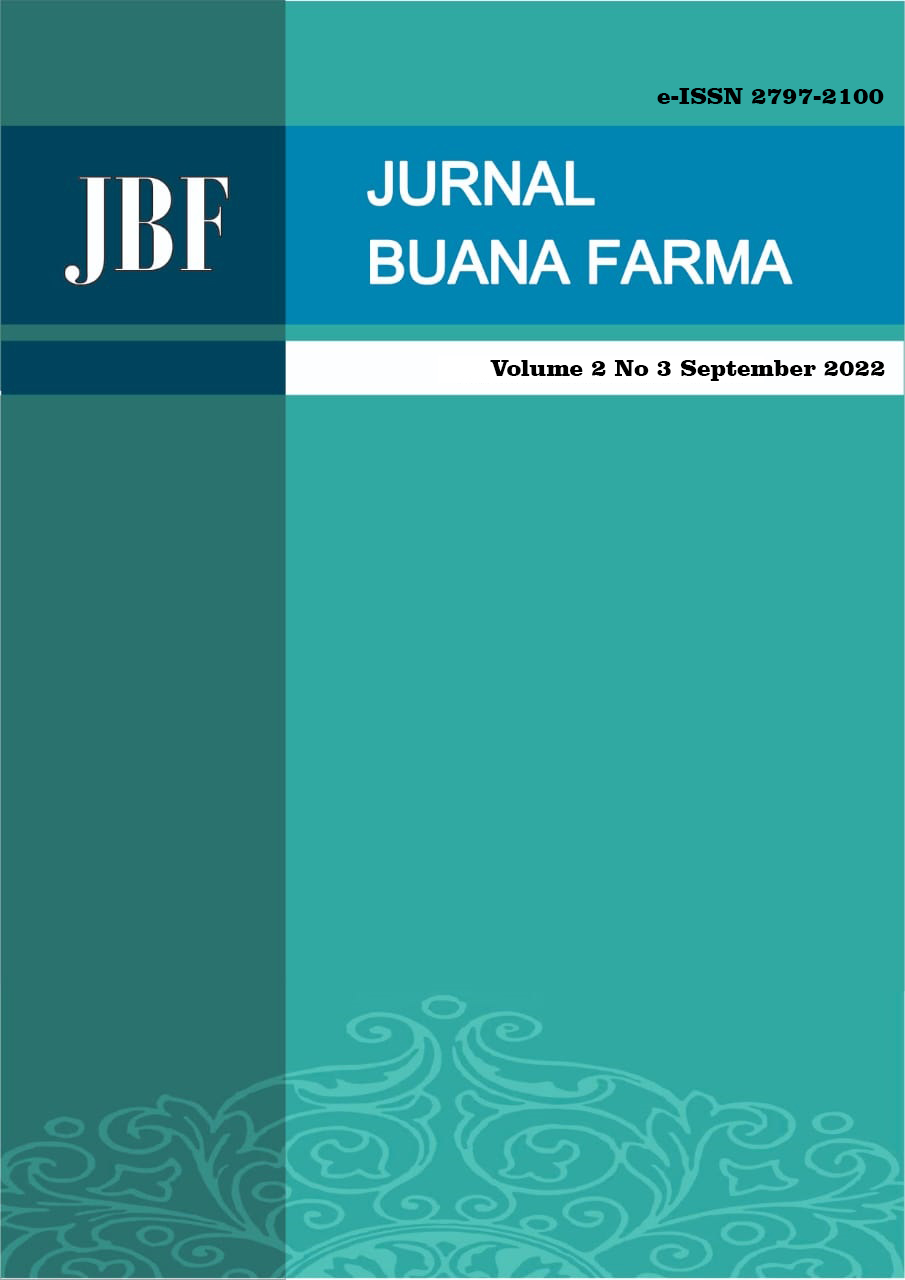SKRINING FITOKIMIA DAN PROFIL KLT DARI FRAKSI N-HEKSANA DAN ETIL ASETAT PADA KULIT Pithecellobium jiringa (Jack) Prain
Abstract
Jengkol (Pithecellobium jiringa (Jack) Prain) is a plant that is very often used as a popular processed food ingredient. Based on previous research that the seeds and rind of jengkol have a hypoglycemic effect and reduce glucose levels, and other ingredients are alkaloids, saponins, quinone and flavonoids. This study aims to determine the content of secondary metabolite compounds and the TLC profile contained in the rind of jengkol at fractionation of n-hexane and ethyl acetate. The methods are screening phytochemical, column chromatography, and the TLC. The phytochemical test showed that the rind of jengkol contained terpenoid, flavonoid and saponin compounds. Fraction A was shown spot bluish-green with Rf value 0,64 by the TLC test. The result of the TLC test was indicated to- saponin compound which is characterized by the presence of foam. The result of ethyl acetate fractionation was shown as light blue on The TLC chromatogram with an Rf value of 0,47 which is characterized flavonoid test.
References
Abriyani, E., & Fikayuniar, L. (2020). Screening Phytochemical , Antioxidant Activity and Vitamin C Assay from Bungo perak-perak (Begonia versicolar Irmsch ) leaves. 10(3), 1–5.
Ahmad, H. (1996). Penuntun Belajar Kimia Dasar: Larutan.PT Citra Aditya Bakti. Bandung.
Gritter , R.J, Bobbic, J.N., dan Schwarting, A.E., 1991, Pengantar Kromatografi , diterjemahkan oleh Kosasih Padmawinata, Edisi II, hal 107, ITB Press Bandung
Harborne, J. B., 1996, Metode Fitokimia, diterjemahkan oleh Kosasih Padmawinata dan Iwan Soediro, Edisi II, hal 14; 21-22; 69;72, ITB Press, Bandung.
Harisaranraj R, Babu SS, and Suresh K. 2008. Callus Induction and Plant Regeneration of Vigna Mungo (L.) Hepper via Half Seed Explant. Ethnobotanical Leaflets. 12 : 57-85
Harwoko, S. Pramono, and A. E. Nugroho. 2014. Triterpenoid-rich Fraction of Centella asiatica Leaves and in vitro Antihypertensive Activity. International Food Research Journal. Vol. 21 (1) :149-154
Heyne. 1987. Tumbuhan Berguna Indonesia Jilid III. Jakarta: Badan Litbang Kehutanan.
Hutasuhut, A.B., 2012. Banjir, Jengkol, Rahudman, http://www.hariansumutpos.com/2012/01/23377/banjir-jengkol-rahudman.html, 13 Oktober 2014
Hutauruk, J.E, (2010), Isolasi Senyawa Flavonoida Dari Kulit Buah Tanaman Jengkol (Pithecellobium lobatum Benth), Skripsi, FMIPA, USU
Rahmat, H., (2009), Identifikasi Senyawa Flavonoid Pada Sayuran Indigenous JawaBarat, skripsi, Fakultas Teknologi Pertanian, Institut Pertanian Bogor, Bogor.
Soetarno, S., & I. S., Soediro, 1997, Standardisasi Mutu Simplisia dan Ekstrak Bahan Obat Tradisional, Presidium Temu Ilmiah Nasional Bidang Farmasi.













